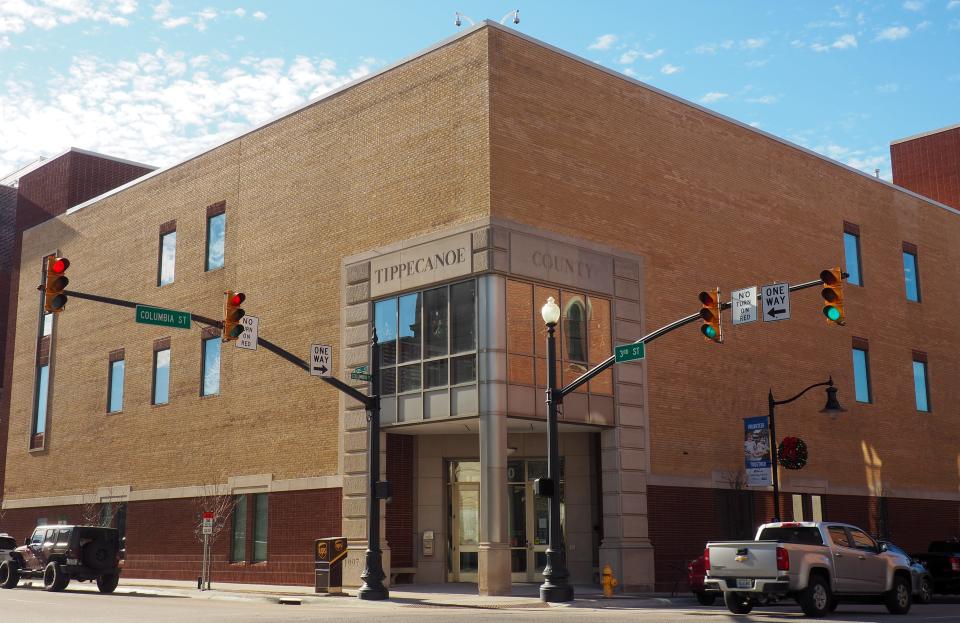County will propose ordinance to allow developers to build privately owned townhouses
LAFAYETTE, Ind. — The issues of inadequate housing, inattentive landlords and rising costs for single-family homes spurred the Tippecanoe Area Plan Commission to consider alternatives, including owner-occupied townhomes.
Ryan O'Gara, assistant director of the Area Plan Commission, and the commission's board, soon will propose a new zoning ordinance, which theoretically fills the “missing link” needed to improve the area’s housing market.

O’Gara is working on the proposed ordinance that will allow developers to create townhomes within single-family housing residential areas. These townhomes must be at least 24 feet wide and can only be three stories high.
“It creates a pathway, a much faster pathway to create single-family attached homes, kind of the walk-up variety," O'Gara said.
"These are small lots — 1,200 square feet or greater — 24-feet wide minimum. So a pretty cozy lot,” O’Gara said. “It is what is called a 'fee simple lot,' which means you own the land, and you own the house on it.
“For a lot of families, they can only afford a townhouse, because the land is expensive, and the house is expensive," he said. "If you buy a townhouse, it’s less than both of those things. And that can sometimes put a new home for someone into an affordable price range.”
This proposed ordinance would be different from the current model in which townhouses are allowed to be built within the county.
Townhouses are traditionally built as a way to maximize the number of single-family homes that can built on a single plot of land, but there currently isn’t a way to capitalize on this aspect of the market within Tippecanoe County.
Currently, townhomes are only allowed to be built within residential areas that allow for more than one housing unit to be built on a plot of land, which in turn means that a developer can only sell the “townhouses” as either a duplex or apartment complex.
Because of this restriction, developers in the past have not been able to sell townhouses to families. Rather, any townhouses were sold to property managers or real estate investors.
O’Gara and the area plan commission team hope that creating this new “single-family townhomes residential zoning” will give developers the flexibility needed to start building new single-family homes within the two cities.
O’Gara highlighted how some developers have been hesitant to invest in new single-family home projects because of the increasing cost of materials over the past few years. The new option for developing smaller housing units might alleviate some of those concerns, he said.
“The next step between an apartment and a single, detached home is to take a single detached home and put them together. It’s a more affordable option,” he said.
“This code would allow the full spectrum if someone wanted to build luxury townhouses or affordable. Instead of wanting to go 24 (feet) wide, maybe they wanted to go 30-foot-wide unit, they could.”
O’Gara noted that the proposed ordinance is still being crafted, but some ideas that he highlighted were some approved variations in how a townhome could be developed.
He shared that if a developer wanted to install a rear-loading garage, front-loading garage, or no garage they are able to. If a developer wanted to install a rear-loading garage they could take up some the front yard space to install a front porch.
“In some of our urban core areas, which are mapped in our zoning ordinance, basically, there is a zero-parking option, so they could create a unit with no garage port. There’s basically a zero-parking minimum requirement” he said.
“This is something experimental for us (Tippecanoe County), but nationally this has actually been catching on for a while, and I felt like this was an opportunity to introduce it and see how it plays.
“To me, these would be places to try this out. Areas that are already very walkable, easy access to transit. A lot of them have historic buildings that never even had a garage. So, we want to give the option to recreate that vibe because there might be a market for it.”
Under the proposed ordinance, O’Gara noted that the development of the townhouses will primarily only be allowed in the core of Lafayette and in neighbors adjacent to Purdue University in West Lafayette.
In Lafayette, the proposed ordinance would allow townhouses from Fannon Drive to Earl Avenue and from Schuyler Avenue to Cherokee Avenue, with an exception of certain areas above Union Street.
In regard to West Lafayette, the proposed ordinance indicates townhouses could only be built in the areas between Northwestern Avenue and North River Road, and Meridian Street and West Williams Street.
Townhouses will not be allowed in the county or areas away from these core areas. O’Gara noted that if the county and then cities approved this new ordinance, the area plan commission wanted to keep this development to a controlled potential of the cities that have access to public utilities.
If the county finds success in this new developmental ordinance, then the area plan commission would be open to expanding it to other parts of the cities.
As of now, O’Gara expects this new ordinance to be ready for a hearing later this year and hopes to see it approved by all three governments by the end of the year.
Noe Padilla is a reporter for the Journal & Courier. Email him at Npadilla@jconline.com and follow him on Twitter at 1NoePadilla.
This article originally appeared on Lafayette Journal & Courier: Proposal might allow privately owned townhouses in Lafayette area

